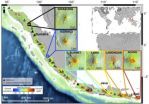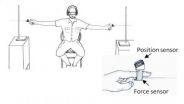(Press-News.org) CHICAGO – Even in men and women with an optimal cardiovascular disease (CVD) risk factor profile, the lifetime risk estimate for CVD is greater than 30 percent, and is more than 50 percent for men and women overall, according to a study appearing in November 7 issue of JAMA, a theme issue on cardiovascular disease. The study is being released early online to coincide with the American Heart Association's Scientific Sessions.
"To date, there have been no published data on the lifetime risk for total CVD (including coronary heart disease [CHD], atherosclerotic and hemorrhagic stroke, congestive heart failure [CHF], and other CVD death)," according to background information in the article. "Estimates of lifetime risk for total CVD may provide projections of the future population burden of CVD and may assist in clinician-patient risk communication."
John T. Wilkins, M.D., M.S., of the Northwestern University Feinberg School of Medicine, Chicago, and colleagues conducted a study to estimate lifetime risk for total CVD in separate models for men and women overall and by aggregate risk factor burden at index ages of 45, 55, 65, and 75 years. The study consisted of a pooled survival analysis of data from 1964 through 2008 from five National Heart, Lung, and Blood Institute-funded community-based cohorts: Framingham Heart Study, Framingham Offspring Study, Atherosclerosis Risk in Communities Study, Chicago Heart Association Detection Project in Industry Study, and Cardiovascular Health Study. All participants were free of CVD at entry into the study with risk factor data (blood pressure [BP], total cholesterol [TC], diabetes, and smoking status) and total CVD outcome data. The primary outcome measure for the study was any total CVD event (including fatal and nonfatal coronary heart disease, all forms of stroke, congestive heart failure, and other CVD deaths).
Across all index ages, 1.7 percent to 7.9 percent of individuals were in the all optimal risk factor group. In contrast, more than 55 percent of individuals were in the 1 major or at least 2 major risk factor strata at all index ages. At some time during follow-up across all index age groups, approximately 30 percent to 35 percent of individuals experienced CVD events. The researchers found that at an index age of 45 years, overall lifetime risk estimates for total CVD through age 95 years were 60.3 percent for men, and 55.6 percent for women. Women had significantly lower lifetime risk estimates than men at all index ages.
At index ages 55 and 65 years, men and women with at least 1 elevated risk factor (BP, 140-149/90-99 mm Hg; or TC, 200-239 mg/dL; but no diabetes or smoking), 1 major risk factor, or at least 2 major risk factors (BP, 160/100 mm Hg or greater or receiving treatment; TC, 240 mg/dL or greater or receiving treatment; diabetes mellitus; or current smoking) had lifetime risk estimates to age 95 years that exceeded 50 percent. At an index age of 55 years, men with optimal risk factor profiles [BP, END
Lifetime risk of developing cardiovascular disease substantial
2012-11-05
ELSE PRESS RELEASES FROM THIS DATE:
Daily multivitamin use among men does not reduce risk of major cardiovascular events
2012-11-05
CHICAGO – In a randomized study that included nearly 15,000 male physicians who were middle-aged or older, daily multivitamin use for more than 10 years of treatment and follow-up did not result in a reduction of major cardiovascular events, heart attack, stroke, or death from cardiovascular disease, according to a study appearing in November 7 issue of JAMA, a theme issue on cardiovascular disease. The study is being released early online to coincide with its presentation at the American Heart Association's Scientific Sessions.
"Despite uncertainty regarding the long-term ...
Risk of fatal coronary heart disease higher among black men
2012-11-05
CHICAGO – In an examination of the incidence of coronary heart disease (CHD) in the U.S. by race and sex, black men and women had twice the rate of fatal CHD compared with white men and women, with this increased risk associated with a greater prevalence of CHD risk factors, according to a study appearing in November 7 issue of JAMA, a theme issue on cardiovascular disease. The study is being released early online to coincide with the American Heart Association's Scientific Sessions.
"Although mortality rates for acute myocardial infarction [MI; heart attack] and coronary ...
Study finds high prevalence of major cardiovascular disease risk factors among US Hispanic adults
2012-11-05
CHICAGO – In a study that involved more than 16,000 Hispanic/Latino men and women living in the United States, the prevalence of major cardiovascular disease (CVD) risk factors was high and varied markedly across different background groups; and those born in the U.S. were more likely to report a history of coronary heart disease and stroke and to have multiple CVD risk factors, according to a study appearing in November 7 issue of JAMA, a theme issue on cardiovascular disease. The study is being released early online to coincide with the American Heart Association's Scientific ...
Taking the 'pulse' of volcanoes using satellite images
2012-11-05
MIAMI – November 5, 2012 -- A new study by scientists at the University of Miami (UM) Rosenstiel School of Marine & Atmospheric Science uses Interferometric Synthetic Aperture Radar (InSAR) data to investigate deformation prior to the eruption of active volcanoes in Indonesia's west Sunda arc. Led by geophysicist Estelle Chaussard and UM Professor Falk Amelung, the study uncovered evidence that several volcanoes did in fact 'inflate' prior to eruptions due to the rise of magma. The fact that such deformation could be detected by satellite is a major step forward in volcanology; ...
Hydro-fracking: Fact vs. fiction
2012-11-05
Boulder, CO, USA – In communities across the U.S., people are hearing more and more about a controversial oil and gas extraction technique called hydraulic fracturing – aka, hydro-fracking. Controversies pivot on some basic questions: Can hydro-fracking contaminate domestic wells? Does it cause earthquakes? How can we know? What can be done about these things if they are true? A wide range of researchers will address these and related critical questions at the GSA Annual Meeting this week.
"When people talk about contamination from hydraulic fracturing, for instance, ...
Field geologists (finally) going digital
2012-11-05
Boulder, CO, USA – Not very long ago a professional geologist's field kit consisted of a Brunton compass, rock hammer, magnifying glass, and field notebook. No longer. In the field and in the labs and classrooms, studying Earth has undergone an explosive change in recent years, fueled by technological leaps in handheld digital devices, especially tablet computers and cameras.
Geologist Terry Pavlis' digital epiphany came almost 20 years ago when he was in a museum looking at a 19th-century geology exhibit that included a Brunton compass. "Holy moly!" he remembers thinking, ...
Learning a new sense
2012-11-05
Rats use a sense that humans don't: whisking. They move their facial whiskers back and forth about eight times a second to locate objects in their environment. Could humans acquire this sense? And if they can, what could understanding the process of adapting to new sensory input tell us about how humans normally sense? At the Weizmann Institute, researchers explored these questions by attaching plastic "whiskers" to the fingers of blindfolded volunteers and asking them to carry out a location task. The findings, which recently appeared in the Journal of Neuroscience, have ...
Cystic kidney growth curbed
2012-11-05
Autosomal-dominant polycystic kidney disease (ADPKD) is one of the most common genetic disorders, affecting one in every 1,000 people and responsible for up to ten percent of patients on dialysis worldwide. The disease is characterized by the development of cysts that lead to progressive kidney failure and necessitate dialysis or a kidney transplant in most patients aged around fifty. Moreover, the persistent cyst growth causes high blood pressure and painful complications. Although we have known about the disease for over a century and its genetic basis for almost 20 years, ...
US Hispanics at high risk for cardiovascular disease
2012-11-05
Hispanics and Latinos living in the U.S. are highly likely to have several major cardiovascular disease risk factors, such as high cholesterol, high blood pressure, obesity, diabetes, and smoking, according to a new, large-scale study. Risks vary among the diverse Hispanic/Latino groups, but individuals who were born in the U.S. are more likely to have multiple risk factors.
The findings are reported in the Nov. 7 issue of JAMA.
Hispanic and Latino people now comprise the largest minority group in the U.S. Although this population is relatively young, cardiovascular ...
New findings on gene regulation and bone development
2012-11-05
The patients have single short fingers (metacarpals) and toes (metatarsals) and can be restricted in growth due to a shortened skeleton. This hereditary disease is called brachydactyly type E (Greek for short fingers). Three years ago Dr. Philipp G. Maass from the research group of Professor Friedrich C. Luft at the Experimental and Clinical Research Center (ECRC), a joint cooperation between the Charité Medical Faculty and the Max Delbrück Center for Molecular Medicine (MDC) in Berlin-Buch, has discovered an epigenetic mechanism, which, when dysregulated, causes this condition. ...

